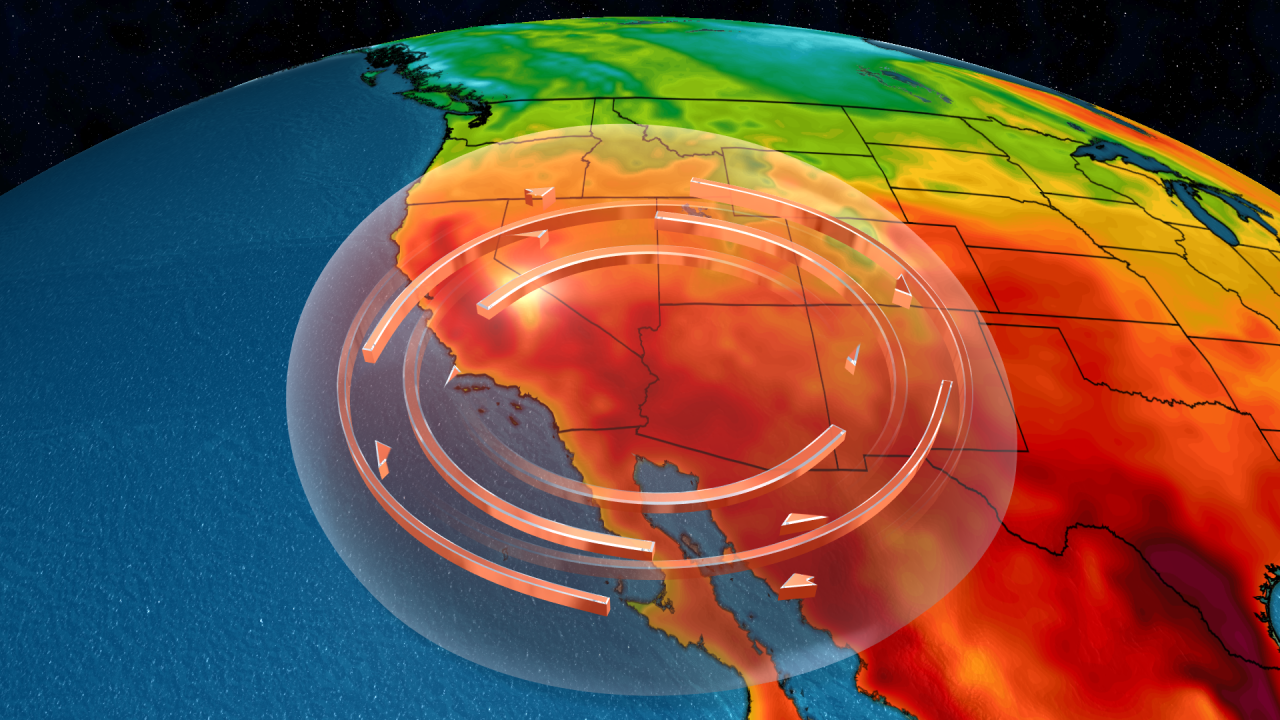The oppressive dome of heat will get even worse. When could maximum temperatures be reached?

(CNN) — A blistering heat is building across California and the West, with temperatures rising to dangerous levels in what is the region’s first significant heat wave of the year.
And the heat hasn’t reached its peak yet. This week, many western states will reach July-like high temperatures, between 11 and 13 degrees Celsius above normal, and many daily maximum temperature records could be broken. Thursday will be the hottest day of the week for millions.
Temperatures will be dangerous for those exposed to the elements and unable to cool off. There will be no respite from the heat even at night, another symptom of a warming world caused by fossil fuel pollution.
The extreme heat over the weekend has already turned deadly, and the worst is yet to come.
Excessive heat warnings are in place for about 19 million people in California, Nevada, Arizona, Utah and southern Texas. The warnings are the most extreme form of heat warning issued by the National Weather Service and are used when widespread, dangerous heat is expected.
The very high temperatures are being caused by a heat dome, a large area of high pressure that settles over a region, trapping air and heating it with abundant sunlight for days or weeks. The longer the heat dome lasts, the more intense the resulting heat.
A blistering heatwave began Tuesday in parts of California and the West. Sacramento, California, topped 37.7°C for the first time this year, while Las Vegas was just half a degree short of its highest temperature so far this year. Several daily records were also broken in Texas.
Temperatures will rise across much of the Southwest on Wednesday. The more extreme heat will avoid major population centers along the coast, but Los Angeles will still be 2 to 5 degrees Celsius warmer than normal this week.
Temperatures above 37.7°C will become widespread across California’s Central Valley on Wednesday and continue through the weekend. Conditions will also be hot in desert areas of Southern California.
Temperatures are expected to reach at least 48.8 degrees Celsius on Thursday in Death Valley, the hottest place in the world. Even the brutal desert landscape doesn’t usually get this hot until mid-to-late June.
Phoenix is expected to reach 110 degrees for the first time this year on Thursday, though the city doesn’t typically see temperatures that high until mid-June. In Las Vegas, highs are expected to reach 40 degrees, which would likely equal the early morning temperatures recorded in the city in 2010.
The heat will also break maximum daily temperature records. Phoenix, Las Vegas, Flagstaff (Arizona), Reno (Nevada) and Fresno (California) are some of the cities where the maximum daily temperature record could be broken on one or more days this week.
Records could be broken in parts of Oregon, Washington, Idaho and Colorado by Friday as the heat spreads north and east.
Deadly heat on the US-Mexico border
Dangerous heat is nothing new for the southern tip of the U.S. The brutal heat in Mexico reached northern Texas early this spring and has persisted for several weeks. Several cities along the Texas-Mexico border experienced their hottest May in history.
Temperatures above 37.7 degrees Celsius proved deadly at the border last weekend, when US Border Patrol agents said four migrants died from “heatstroke and dehydration.”
The deaths were part of “multiple emergencies” due to heat-related illnesses last weekend, according to the U.S. Border Patrol’s El Paso Sector, which covers parts of southeastern New Mexico and western Texas.
Heat is the deadliest weather hazard in the United States. According to the National Weather Service, thunderstorms kill more than twice as many people each year as hurricanes and tornadoes combined.
High temperatures in the region were about 2 degrees Celsius above normal from last Friday to Sunday, but are expected to be up to 5.5 degrees Celsius above normal on Thursday and Friday.
(tag to translate) summer
